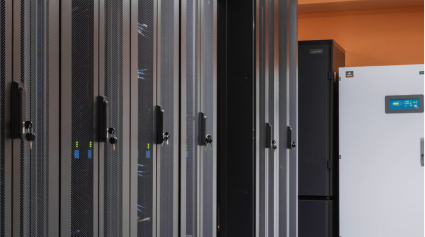We started with the mainframe generation, which gave way to the client/server generation, which has evolved into the present: the cloud generation.
The unprecedented capacity requirements of large social media, search, colocation and cloud companies is driving massive investments in data center development. The scale of these operations has the potential to enable significant innovations in data center design and operation. These organizations don’t have to accept off-the-shelf solutions from their vendors and can instead dictate requirements based on their needs, bringing new solutions to market. They can also test multiple solutions simultaneously to determine which best meets their demands for flexibility, speed and reliability at the lowest cost.
While some of the designs and technologies that emerge will be specific to the largest data centers, others will be more broadly appealing, bringing large-scale-facility innovation to the masses.
The prevailing philosophy of these large data center operators is often deploying “what’s needed, when it is needed” to support specific applications quickly and cost-efficiently. Toward that goal, many are evaluating new power system architectures and the best location for back-up power within the data center. Several alternate power configurations can improve overall cost and deployment speed while providing the availability levels required for this new generation.
The 2N or 2N+1 dual-bus architecture has historically been the choice for high availability. When properly designed, these architectures eliminate single points of failure and allow maintenance on any single component while still powering the load.
But in today’s environment, this level of redundancy is becoming harder to justify. That’s where the emerging alternatives come in. More detail can be found in our white paper on the subject, but here are the highlights:
Reserve Bus Architectures
Pioneered in large colos, the reserve bus creates just enough redundancy to enable fault tolerance and concurrent maintainability. Effective use of static transfer switches (STS) aids in both flexibility and availability. The STS allows a redundant UPS system to be brought online to pick up the load from any one of multiple UPS systems in the event of failure or required maintenance. This deployment does complicate load management compared to the classic 2N architecture, but the economic benefits are compelling. With proper power management software, most complications can be proactively addressed.
Reserve bus architectures can take many shapes – shared, dedicated, or distributed. The primary difference in the configurations rests with how the client loads achieve power redundancy: either sharing a reserve system, dedicating the reserve system to high-priority clients, or accessing unused capacity across multiple UPS modules. All can offer significant flexibility in the quest for capital efficiency, speed and availability.
Rack-Based Power Protection
When cost and speed are the driving factors in application deployment, power protection in the rack is now an option, thanks to inspiration from the Open Compute Project. In the spirit of “what’s needed, when it’s needed,” deploying rack-based power systems to energize IT equipment makes the rack an autonomous unit that can be brought online without adding to the load of a room- or aisle-based power protection system. This system has made strides due in part to the advances of lithium ion batteries for power backup. The result is an efficient and economical backup power strategy that provides tremendous flexibility by enabling capacity to be added one rack at a time.
High-Voltage DC Power
Convergence of voice and data has enabled telecommunications providers to become major data center developers. With them comes a long history of using low-voltage DC power. More recently, high-voltage DC has shown significant promise.
High-voltage DC power brings the benefits of DC power to the data center without the historic low-voltage cost implications. Here, redundancy happens at the rectifier level. The DC UPS is sized to withstand a failure of any rectifier without impacting operation, creating internal redundancy that eliminates the need for redundant configurations common in AC UPS systems. The promise of high-voltage DC is that it can simplify power system design and management, enhance scalability, and increase efficiency. DC distribution can be easily configured for any desired redundancy. The biggest challenge facing DC power has been the less mature supplier ecosystem, but if just a few of these new developers embrace DC power, their scale will create the demand that forces the ecosystem to mature quickly.
More Innovation on the Horizon
More than a thousand megawatts of data center capacity will be developed in the next several years by a relatively few companies. Those companies are under intense pressure to build strong, ultra efficient data centers faster and cheaper than ever. I expect their scale and focus to produce more choices for organizations of all sizes.






